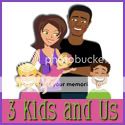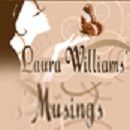 Buying toys used to be fun. Now you have to worry about whether that train set or doll necklace is going to poison the kids on your holiday list. Last year, more than 25 million toys were recalled, many because of lead. The good news is that toy recalls have slowed down and, even better, new lead laws have been passed.
Buying toys used to be fun. Now you have to worry about whether that train set or doll necklace is going to poison the kids on your holiday list. Last year, more than 25 million toys were recalled, many because of lead. The good news is that toy recalls have slowed down and, even better, new lead laws have been passed.However, many of these laws don’t kick in until February 2009 or later, well after the holiday shopping season. And items with worrisome lead levels can end up on store shelves even if they’re not on recall lists and unsuspecting buyers can in turn give them to your kids. So what should you do?
ShopSmart, from the publisher of Consumer Reports, shares 4 safety strategies to make sure your holiday gifts are free of lead and other dangers:
- Know what toys to avoid. Steer clear of no-name toys and, regardless of your child’s age, don’t buy toys with small magnets, even if the magnets seem safely contained within the toy. Don’t buy metal jewelry, especially the cheap stuff, for young children or allow them to play with key chains or items with metal charms. If you have an infant or toddler who still puts almost everything in her mouth, don’t buy squeezable soft plastic toys or books. Unless it says “no phthalates” on the package, there’s no way of knowing if they contain the chemical or not.
- Buy according to a kid’s age. Look for manufacturer’s recommended age ranges on toy packaging. Age grading is more than a friendly hint. It can alert you to a possible choking hazard, the presence of small parts, and other dangers. And think twice before buying a toy with small parts for a child older than 3 who has a younger sibling. Keep all small round or oval objects, including coins, balls, and marbles, away from kids under 3.
- Check for recalls. Before shopping, go to www.cpsc.gov, a government Web site, to see whether the toys you plan to buy (and the toys already in your home) have been recalled. Also, sign up for free e-mail notices of recalls at www.cpsc.gov/cpsclist.aspx. And if a product you buy comes with a registration card, fill it out and send it in so you will be notified directly by the manufacturer if the item is recalled. It’s up to retailers to take recalled toys off store shelves but, once a recalled toy is in your home, it’s up to you to keep it away from your family or return it ASAP.
- Watch where you shop. Be leery of drugstores, airports, and dollar stores. They’ve been known to carry flimsy plastic toys with dangerous sharp edges or small parts that can break off easily. Thrift stores, consignment shops, yard and garage sales, and eBay often have toys in excellent condition, but check to see that they’re well made and have no small magnets or parts. Wash the toys before giving them.

Plus, besides using coupons and snagging sale items, ShopSmart has 5 money saving tips:
- Set a limit. If your kids are flooded with presents from family and friends every year, set a limit on what you spend, whether on one large gift or a few smaller ones. To make less seem like more, pick a toy that starts or feeds a passion, lasts longer and has multiple uses.
- Spread it out. Don’t give your kids all the gifts at once. Set aside some of the bounty for later, perhaps a snow day when they’re home from school.
- Be cautious with used toys. Little Tikes sturdy plastic playhouses, ride-on toys, playground equipment, and good-as-new video games are good finds at tag sales, outlets and online at a fraction of the original price. With a thorough scrub, they will look like new. But first, go to www.recalls.gov for recalls on toys. Then make sure they have no rough edges or parts that could break loose.
- Check out rentals. At www.babyplays.com, you can get four to 10 toys per month, keep them until your child gets tired of them (as long as your membership is current), and return them for a fresh batch for a monthly fee of $26.99 to $64.99. Toys for infants to age 5 come sanitized and assembled. All toys are third-party certified for safety.
- Look beyond the logo. Many popular toys are tied to TV characters such as Elmo and Dora the Explorer. Ask yourself, ‘If I took SpongeBob off this package, what do I have?’ If a toy has nothing to offer beyond the character, don’t buy it.
Check out the January 2009 issue of ShopSmart for more great ideas just like these!.

Shop+Smart

























3 comments:
And another suggestion....call your legislators to have CPSIA changed! As written it will destroy the US toy & children's products industry!
http://www.handmadetoyalliance.com
http://www.fashion-incubator.com
http://www.nationalbankruptcyday.com
(if they don't work try .org, not sure which is correct)
Please vote on this!
http://www.change.org/ideas/view/save_handmade_toys_from_the_cpsia
Safe domestically manufactured children's products are in danger of extinction!
I'm a mom too, and I'm pretty darned particular about what my kids eat, wear, and play with. I prefer natural materials whenever possible, and I love having the option to buy handmade toys from small US toymakers made from natural and even organic materials. But if the CPSIA goes into effect without some big changes, those things won't be available for me or my kids any more. It also means I'll have a harder time purchasing second-hand items, like clothes from consignment shops or homeschooling and educational materials on eBay.
I know there will be parents who will only buy items that are certified, and I don't have a problem with that. But as a hobbyist who supplements our family's income with tie-dye, I can't afford to be testing each and every garment I dye, even though the garments and dyes I use are lead-free. I would be fine with keeping paperwork on my materials, and it would mean that I couldn't upcycle any more second-hand clothes into kids' wearable art any more, but at least it wouldn't shut down the kids' portion of my business.
It also occurs to me that some of the sponsors listed to the side of your blog are going to be impacted by this most significantly; the smaller and more specialized the manufacturer and seller, the bigger the effect this will have on bottom lines and prices and availability.
Thanks for the opportunity to speak here.
Hi ;)
I want to thank you for discussing toy safety. As a mother of three this is a huge concern for me. However, the way the law is written in it's current form it will put hundreds of thousands businesses who make natural, organic (lead free ) children's products and other conventional material toys out of business.
For example, I make cloth dolls. I purchase all of my materials from sewing shops and large chains here in the United States.
Product safety should be established at the place of manufacture of these supplies, by the manufacturing company.
If I purchase material to use in a doll or any handmade item, why am I not entitled to the security of knowing the material has been tested by the manufacturer, and has passed these Consumer Product safety standards?
Passing the responsibility of testing on to (me for example)the craftsperson, who is in fact, a consumer, is going to put thousands and thousands of wonderful small companines (many run by SAHM's) out of business.
Rest assured, the large corporations who cut corners in the first place and put our children in jeopardy will remain.
When I buy materials to use, I have purchased as a consumer, and my purchase should already have been deemed safe through testing by the manufacturer.
Vendor certification of materials from the manufacturer is the most cost effective way for safe cottage industry businesses and larger companies to survive.
This new law affects more than toys. It encompasses all items for anyone under the age of twelve, Waldorf Toys included.
Please know we do not want fly under the radar for safety. We just want a way to prove our toys are safe and still remain in business.
Have a fantastic Holiday, and thank you for the opportunity to post a comment on this very important issue.
Best Regards,
Denise Mollison
Post a Comment